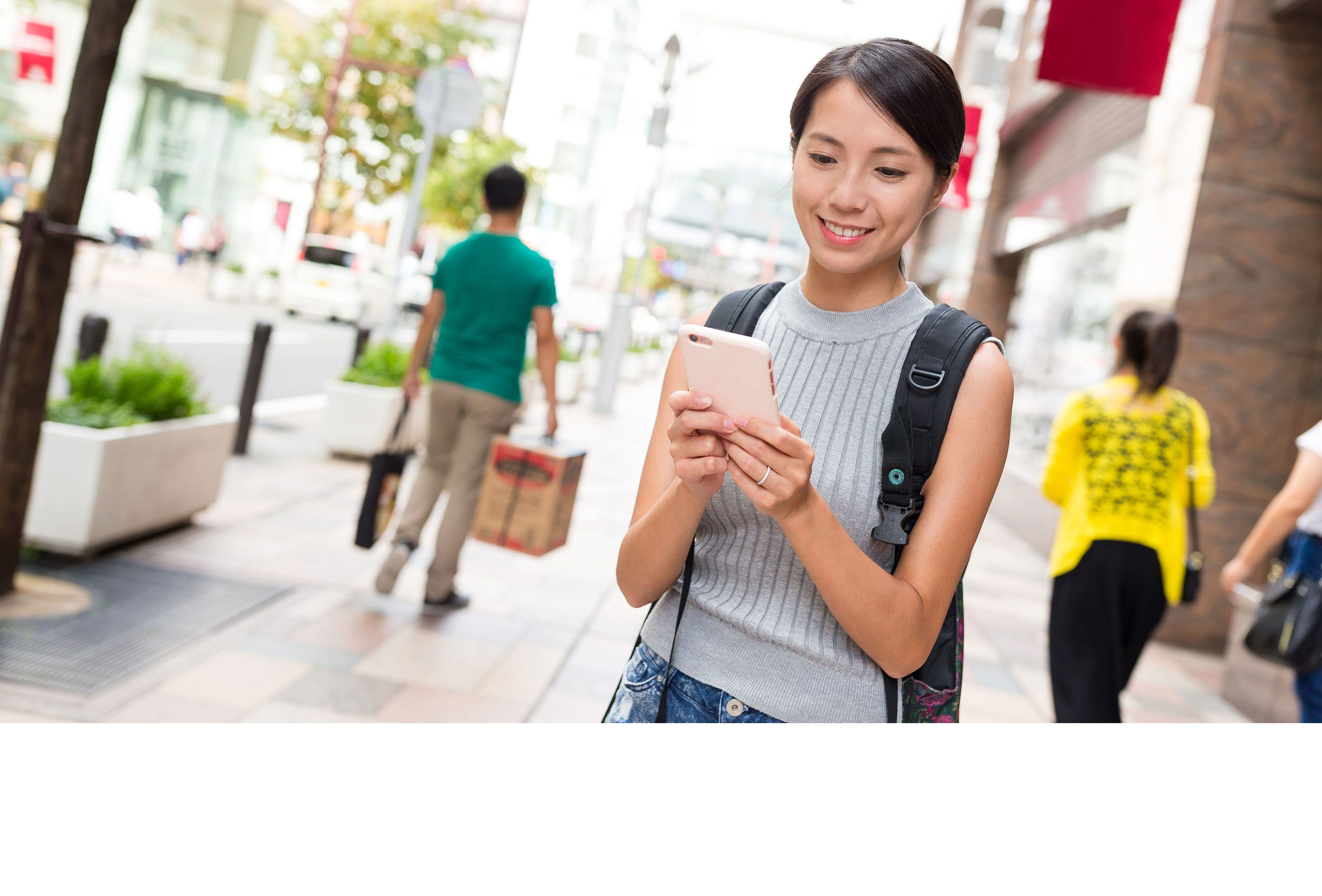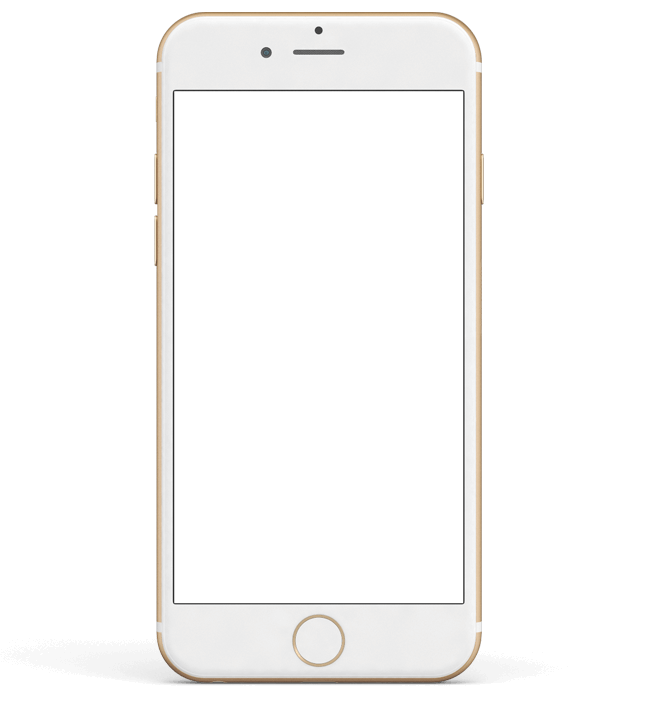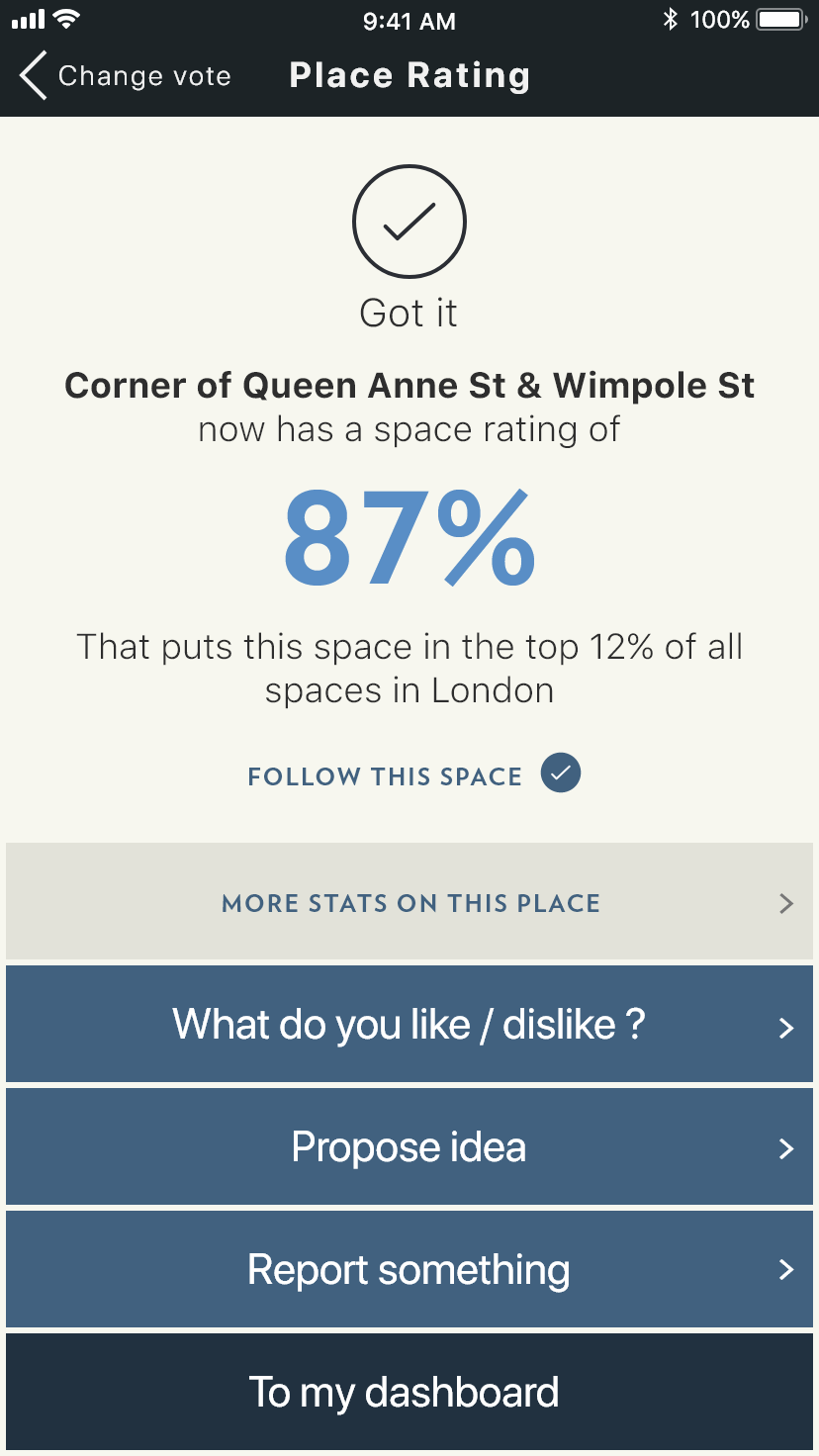The CityChange app gives its users a voice and allows them to design their own city.
Do you enjoy sitting on a particular square? What buildings in your city do you like the best? What shops and services would you like to have in your neighbourhood? Are you missing cycling lanes somewhere? Or a playground for your kids?
With the CityChange app — and the accompanying web platform — users get a voice, with the incentivising reward of instantly being able to compare their views to those of others.
For the user, CityChange is a peer-to-peer tool to engage and influence. A way to connect with your city; vote, comment, suggest, collaborate and follow areas of particular interest to you — like your own neighbourhood. With its built-in social media component, CityChange could be called the TripAdvisor or Facebook for places.
For CityChange as a whole, the app is the data harvester component. All the data from the users’ interaction with their city is aggregated to create a new level of insight into demand and responses to the built environment.
The app was soft-launched in 2022, and as of June 2023 it has been downloaded approx. 2,000 times and received approx. 200 suggestions for the city of Copenhagen as well as many more votes, reviews and comments.
Download now (currently DK only)
V1
The basic CityChange App

Rating
Users rate spaces and the buildings around them. The data is aggregated on-the-fly and instant feedback is given to the user, making it playful to review their surrounding world.
Through this activity, the CityChange platform receives quantitative and qualitative data about sentiments towards distinct places, spaces and structures in the cities of the world.

Parameters
At level 2 of the rating section the users easily cast votes on specific parameters such as ‘places to sit’, ‘air quality’ and ‘road surface’.
Users can also rank “softer” values such as beauty and atmosphere.

Commenting
At level 3 of the rating section the users go into more detail by commenting on spaces and buildings. Our software will eventually also make this qualitative data quantitative by identifying patterns.
Users can react to other users’ comments, and these reactions are used as one of many ranking signals for qualifying data.

Proposals
The user can suggest changes in the urban world, see what others suggest — and vote and comment on the proposals made. The data is continuously aggregated and plotted onto a map of the city.
A little further ahead, CityChange could also enable users to co-fund projects in their neighbourhood. A real opportunity exists here, as improving the local area will not only add to one’s quality of life, but increase the value of one’s property too.

Reporting
Has the light gone out? Potholes? Or just too much dog poo? The user can report issues of all kinds – and see what else is being reported around the city.
A few locally developed reporting apps like this exist already — but they face the challenge of adoption. By integrating this functionality into a more comprehensive app like CityChange, much wider reach and adoption can be expected.

My Place
CityChange app users get to express what they want near their home. In turn, retail, eateries, services etc. get a highly valuable database of exactly where to find the greatest demand for their services.

Your City Feed
The user can follow their ideas and suggestions and the areas of the city they are interested in. New projects and proposals. Property they may be interested in. Surveys about their physical world. And is that Sainsbury’s Local finally opening up in the neighbourhood? The user can find it all in their personalized city feed.
From a business point of view, these feeds could also contain hyper-local sponsored messages targeted at people known to be interested in very specific localities.
A tool to manage your physical world
Once enough data has been accumulated for a given city, and enough locals are using the platform, numerous opportunities open up for further integrations and functionalities.
CityChange will establish collaborations with city administrations and integrate the city administration’s own data. Tools for direct communication between stakeholders and citizens will be added to the app to create a new layer on top of the independently running peer-to-peer review system.
Now, CityChange is becoming an interface to the urban world: The users’ connection to city administrations, urban developers, real estate agents, retail and services — and to each other.
V2
Examples of new functionality added after partnerships set up with major cities

Surveys & Polls
City administrations, urban developers and others can easily run polls and surveys targeted specifically at a relevant audience that wishes to have a say — and from whom the data is wanted.
Today, data like this is gathered in inefficient and costly ways.

Hearings & Projects
Today’s procedures for following planned and proposed projects and having one’s say are archaic.
With the CityChange app, users can very easily follow suggested and ongoing changes in their area, and elsewhere, as well as provide their input.
With user consent, the CityChange app could also track movement around the city to feed transport data into the CityChange platform. Or users could review commercial spaces too. Or the app could be expanded to become an all-encompassing community-app for neighbourhoods.
During the journey ahead, some use cases may prove impractical, while new ones will open up. At the core of the vision for the CityChange app lies that it forms the user’s interface to the urban world and will feed valuable data into the Civitize platform. The various functionalities can then be explored and tweaked along the way.




